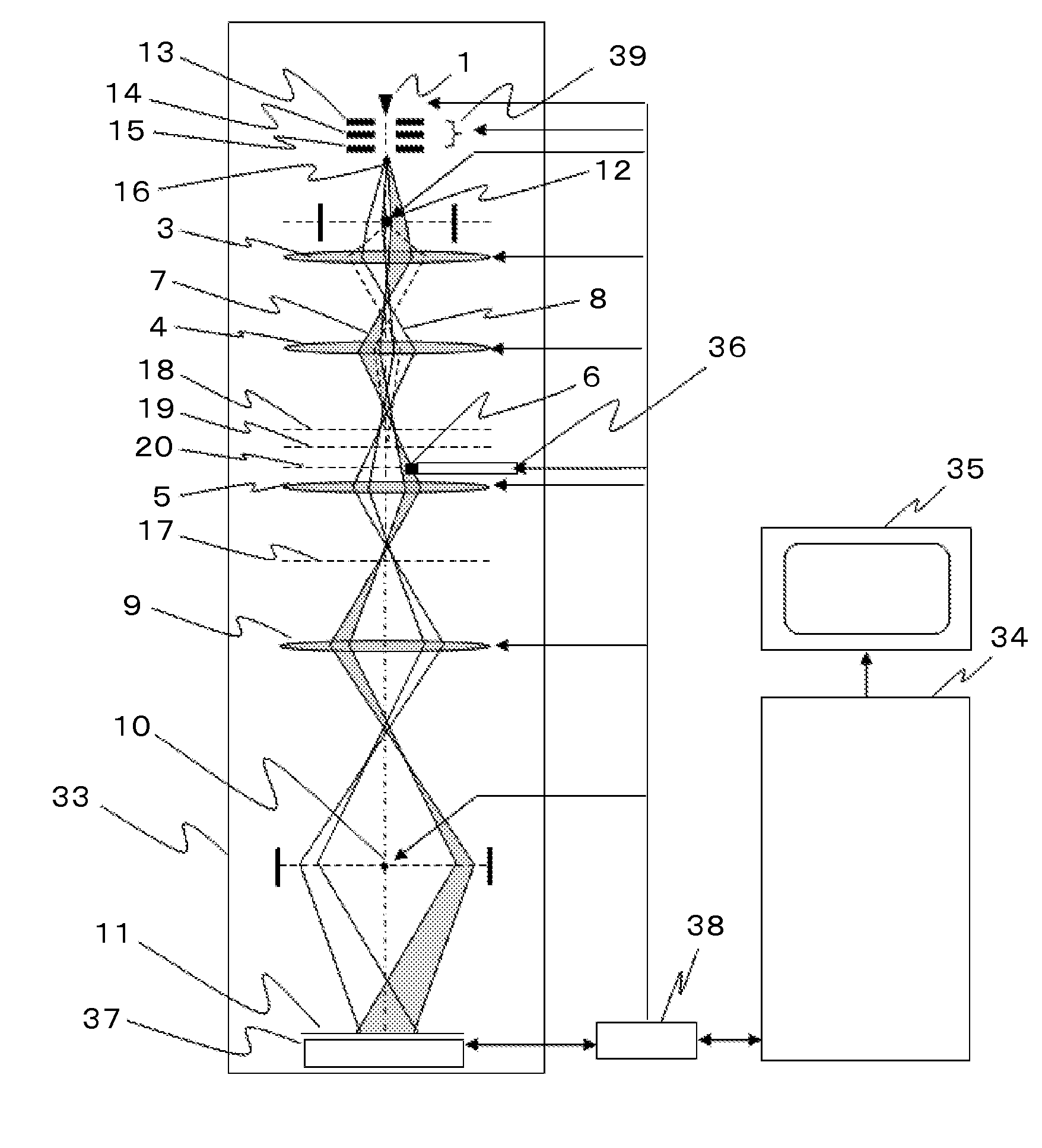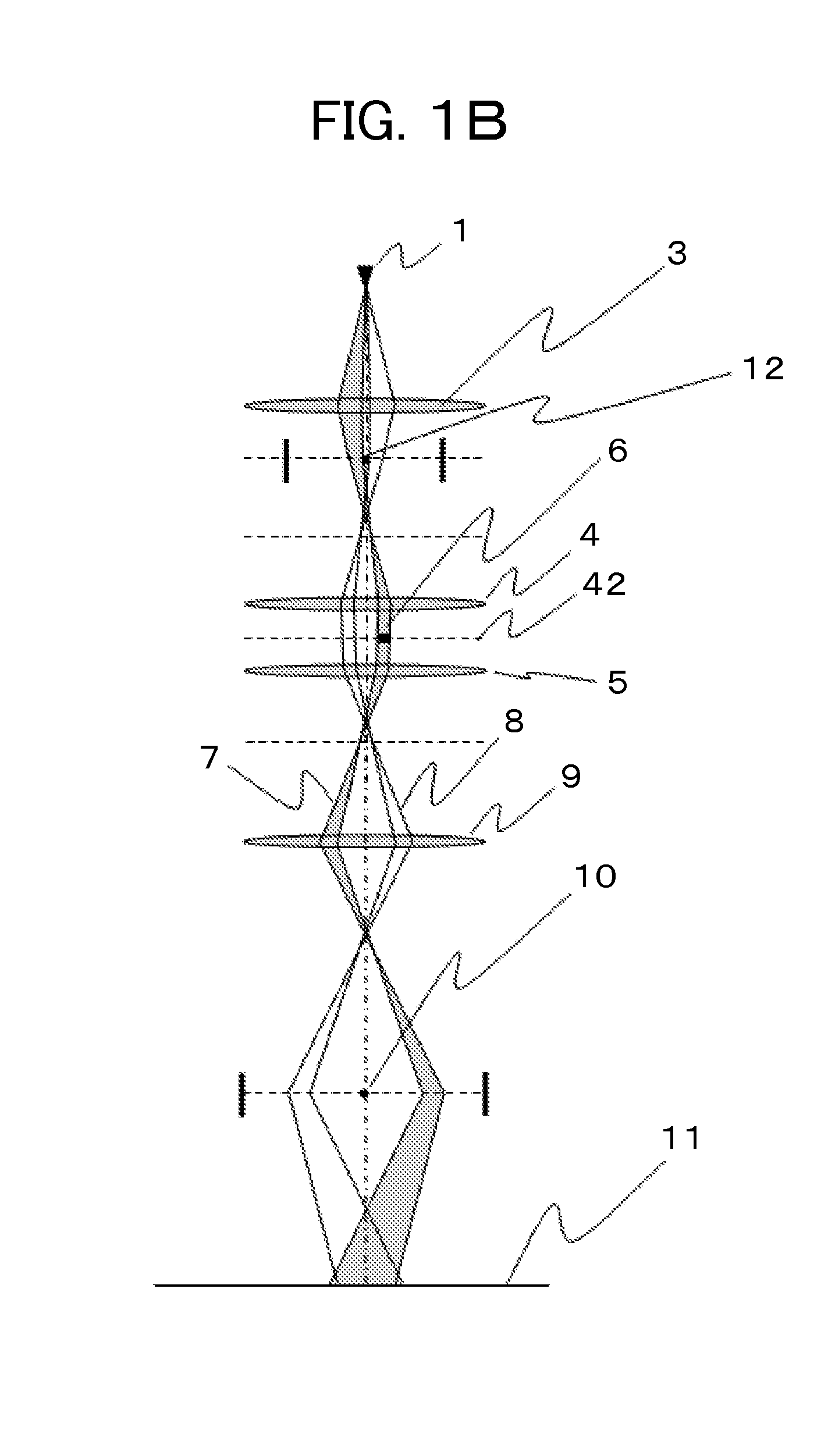Electron beam device
- Summary
- Abstract
- Description
- Claims
- Application Information
AI Technical Summary
Benefits of technology
Problems solved by technology
Method used
Image
Examples
first embodiment
[0060]A first Embodiment relates to the interference microscope using the transmission type electron microscope.
[0061]FIG. 3 schematically shows the optical system of the electron beam device according to the first embodiment. The electron beam device shown in FIG. 3 is intended to use the general purpose transmission type electron microscope for the interference microscope. However, the first embodiment is not limited to those described referring to the drawing. FIG. 4 shows the upper optical system of the electron beam device according to the first embodiment as shown in FIG. 3. FIG. 5 shows the relationship of the electron source on the electron optics, the first electrode filament plane on the electron optics, and the specimen plane. They have been already described, and explanations thereof will be omitted.
[0062]As for the electron beam device according to the first embodiment shown in FIG. 3, the electron source 1 is located at the most upstream part in the electron beam flow ...
second embodiment
[0072]FIG. 6 is a schematic view showing an electron beam device according to a second embodiment. FIG. 7 is a schematic view showing an upper optical system of the electron beam device shown in FIG. 6. The overall structure of the device is similar to that of the first embodiment. Therefore, explanation of the same parts as those of the first embodiment will be omitted, and the upper optical system with different structure will be described.
[0073]Referring to the electron beam device according to the embodiment, that is, the interference microscope using the transmission type electron microscope, the first electron biprism is provided downstream of the first electron source and upstream of the electron lens of the irradiation system. However, as for the electron beam device as FIG. 7 clearly shows, the electron lens of the irradiation system is formed only of the first irradiation electron lens 3, while omitting the second irradiation electron lens 4. It is therefore possible to co...
third embodiment
[0076]FIG. 8 is a schematic view showing an electron beam device according to a third embodiment. FIG. 9 shows an upper optical system of the electron beam device. As the overall structure of the electron beam device is similar to that of the first embodiment, explanation of the same parts as those of the first embodiment will be omitted. The upper optical system with different device structure will only be described. The upper optical system of the electron beam device according to this embodiment has the feature that the first electron biprism is provided inside the electron lens of the irradiation system, that is, between the first and the second irradiation electron lenses which constitute the electron lens of the irradiation system. Action of the second irradiation electron lens then serves to irradiate the specimen with parallel electron beams.
[0077]Referring to the electron beam device according to the third embodiment as FIG. 9 clearly shows, the first irradiation electron l...
PUM
 Login to View More
Login to View More Abstract
Description
Claims
Application Information
 Login to View More
Login to View More - R&D
- Intellectual Property
- Life Sciences
- Materials
- Tech Scout
- Unparalleled Data Quality
- Higher Quality Content
- 60% Fewer Hallucinations
Browse by: Latest US Patents, China's latest patents, Technical Efficacy Thesaurus, Application Domain, Technology Topic, Popular Technical Reports.
© 2025 PatSnap. All rights reserved.Legal|Privacy policy|Modern Slavery Act Transparency Statement|Sitemap|About US| Contact US: help@patsnap.com



